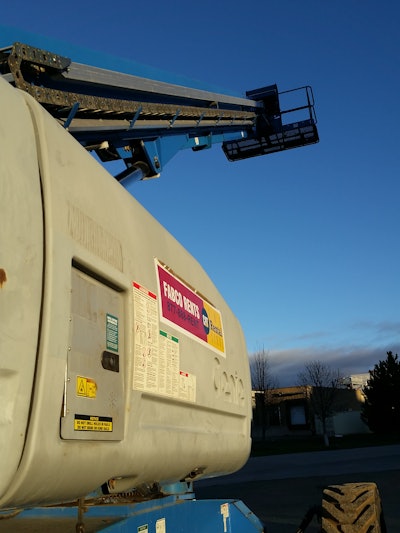
Every contractor out there should be interested in this topic, especially this year as rental rates rise, availability gets tight and used equipment prices increase.
Why would that be, you ask? For a number of reasons:
- New equipment prices continue to climb.
- The oversupply of equipment due to the slowdown in the oil fields has finally been absorbed in the rental markets, thus pushing up used equipment values.
- The oil field impact in 2016 caused heartburn for manufacturers who wound up with excess inventory because users didn’t need to buy as many units as anticipated. To offset the heartburn, many manufacturers cut back on 2017 production, causing long lead times, thus lowering the turnover of rental fleets.
- Many rental companies are keeping rental units for an extended term and thus reducing used equipment availability.
- A mild winter along with stronger than expected construction work is reducing availability.
Add it all together and you get rental unit demand that is exceeding supply; more work that decreases rental fleet availability; and high utilization rates that support both higher rental rates and higher used equipment pricing. The bottom line: equipment availability is down and it’s driving up both rental and used equipment costs.
To learn more about what’s happening on the rental side of the equation, I suggest you read KeyBanc Capital Markets’ report titled “Equipment Rental: The Great Rate Debate – A Look at the Drivers of Rental Rate” (June 14, 2017). I also suggest you sign up for its capital market reports covering rental, construction activity and other business sectors, which help determine how various construction markets will be fairing and what regions will receive the boom or bust impact.
Ensure Equipment Availability
The next step is to figure out how you deal with the above scenario for the rest of this season and maybe into 2018, as well. It’s no secret that the American Rental Association is still projecting significant increases for the rental industry for the next five years. So far, their prior projections have been in the right ballpark, and I do not see any reason not to support their current outlook. When you consider how many rental outlets there are — combining both rental companies and equipment dealers with a strong rental initiative — it’s hard to imagine any slowdown in the rise of rental in the near future.
So what should you do? First, let’s deal with the availability question, because that’s the one that will cause the most heartburn for you and your profitability. You may have more work this year, but it does you little good if you don’t have the equipment you need in the field when you need it. I don’t believe I will get much argument about that statement.
Consequently, I suggest you need to get your owned fleet up and running first and keep it that way to offset any availability issues that may occur this season. It may cost you more than a rental but it has to be done. And when I say “done” I mean done, and not a six-week project that drags on until the end of the season. If you can’t do it internally, ship it out to a dealer or rental company to do the fix.
Another tip regarding availability is to become an “important” customer to your rental provider. If you schedule out your projected needs in terms of time and type of units and work out an annual contract with the supplier, I can guarantee when you call, your request will go to the top of the list. This may not work 100% of the time, but it will supply benefits, especially if they are also repairing your down units.
Rates are another issue. They will increase this year. It could be from 1% to 4% depending on equipment type and your location. Spending a lot of time trying to find a “cheap” unit may wind up costing you a lot more than the rate increase if you wind up with no unit at all and lose time in the field as a result. So I suggest you live with it and work out what you can with your annual rental contract.
The Ups and Downs of Used Pricing
Used equipment pricing will be both positive and negative for contractors. If you’re in the market for used equipment, it will cost you more, but if you’re on the selling end, it could be a good thing.
If you’re looking for a quality used piece of equipment, I suggest you check with the rental company for one of their older units that has a good maintenance history. If there are some things you don’t like about the unit, have them make the fix for a modest additional cost. Again, you need equipment to do the work without downtime, so it pays to get it work-ready before you buy it.
On the other hand, if you have units in your fleet that have low time utilization (for any number of reasons) and you don’t see an immediate need for them, now is the time to get them sold to free up cash for working capital purposes.
To sum up, I will note that rental markets change almost yearly because minor changes in one industry can impact rates and availability. This year, the rental companies will make up a little of what they lost the last few years. It is what it is — so deal with it and adjust your own pricing as necessary.



















